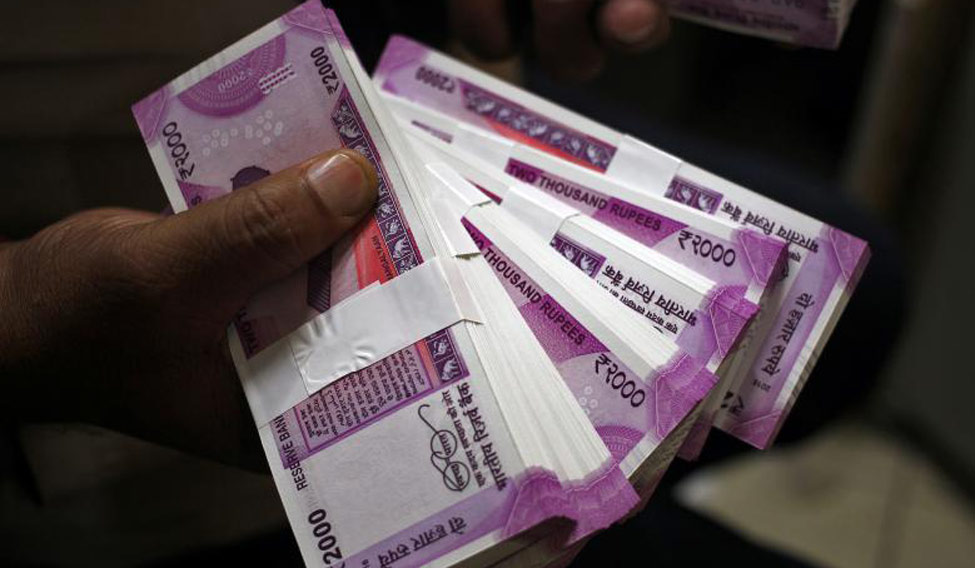The Indian rupee was among the best performing currencies in Asia this year, but in September, it has been among the worst performing. On Thursday, it hit fresh six months low against the US dollar, before recovering through the day. The currency had been on a slide, falling 2.4 per cent over five sessions, touching levels not seen since March 2017.
On Thursday, the rupee opened at 65.79 against the greenback, versus its previous close of 65.71. It fell to 65.89, a level it hit last on March 14, before recovering to close at 65.51, tracking a bounce back in equity markets.
The Reserve Bank of India has been intervening in the market in recent days, stepping up buying of dollars to check the fall in rupee, say traders.
What's behind the rupee sliding? The key reason is that the foreign institutional investors, who were heavily investing in India's equity markets, have been retreating over past two months. Falling gross domestic product (GDP) growth, rising current account deficit and worries over fiscal deficit are making investors nervous. Rising geo-political tensions between the US and North Korea and the US Federal Reserve reversing its easy money policy have also weighed.
When FIIs are buying more in India, there is more demand for the rupee, and when they sell, the demand falls, thus making the currency weaker.
In August, FIIs pulled out Rs 12,770 crore from India's equity market. So far in September, they have also been net sellers to the tune of Rs 6,715 crore, according to data from NSDL.
On Thursday, the equity markets also recovered after falling for seven straight sessions.
The BSE Sensex closed up 123 points or 0.4 per cent to 31,282.48 and the NSE Nifty 50 rose 33 points or 0.3 per cent to end at 9,768.95. For the month, however, both the benchmark equity indices are down close to 1.50 per cent.
India's economic growth in the April-June quarter slumped to 5.7 per cent, dragged by the tail effects of the government's move to ban high value currency notes and the uncertainties before the roll out of the Goods and Services Tax from July 1.The current account deficit (CAD) widened to a four-year high of $14.3 billion or 2.4 per cent of GDP in the quarter ending June. Nomura Securities has flagged off the two events as key negative developments.
“The current combination of external risks from DM (developed markets) policy normalisation and local negatives from fiscal and current account deficits and slower growth keep us on the side lines with respect to Rupee,” said Craig Chan, research analyst at Nomura.
The sharp drop in economic growth has raised hopes of a government stimulus, and there have been reports that it may relax its fiscal targets, but that will put pressure on the country's fiscal deficit, which is up 28.5 per cent and already 92.4 per cent of the full year target. This will further dent foreign investor sentiment and pressure rupee.
“This (government starting prioritising support for growth over fiscal consolidation) would occur at a time when the government is already facing several other challenges from a potential bank recapitalisation, subsidies, boosting investment etc...The risk in the near-term is that these actions may reduce the scope for the RBI to cut its policy rate and raise some concerns from ratings agencies,” added Chan.
While some sections are batting for the central bank to cut repo rate to energise the economy, others expect the central bank to stay on hold, given the economic uncertainties and with inflationary pressures also rising.
Over the past four-five years, India's CAD as well as fiscal deficit came-off sharply and analysts are warning against excessive fiscal sops now.
“We believe, there is no room for complacency and excessive fiscal profligacy to spur growth in the short-term could potentially precipitate into an external account crisis down the line,” said Teresa John, research analyst at Nirmal Bang.
A depreciating rupee will benefit software services companies, as well as textile, garment firms and pharmaceutical producers, all of whom are large exporters. Products and services that they sell overseas, will now get them more rupees.
However, tourists going abroad or students going for higher studies in foreign universities, will be hit as their holidays or education will now become marginally expensive to the extent of the rupee depreciation. Importers also must pay more now.
Where is the rupee headed from here on?
Chan of Nomura believes that despite the near-term headwinds, once the market starts pricing in some fiscal slippage and also prices in possible interest rate hike by the US Fed in December, the rupee will appreciate again.
However, others expect the rupee to remain under pressure. Kotak Institutional Equities, for instance, expects the rupee to average around 65.25 to the dollar in the current fiscal.
“The heightened geo-political risks strengthen our case for a depreciating bias for the rupee against the dollar for the rest of the fiscal year ending March 2018,” said Suvodeep Rakshit, senior economist at Kotak.






